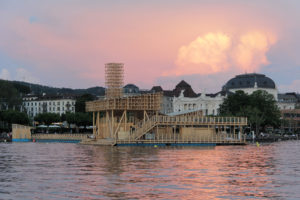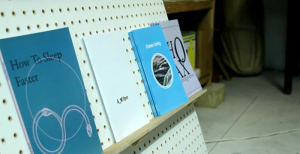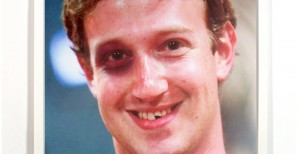“The unstable identity of the present begs for the return of power of the mask from ancient times, when it was used as a form of protection, disguise, performance, or just plain entertainment”, states curator and artist Bogomir Doringer in the catalogue for his newly opened exhibition Faceless II at the Freiraum Quartier21 International of MuseumsQuartier Wien.
The first of the exhibition series, Faceless I, was held with success last summer, working with the theme of ‘facelessness’ in a survey of the emergence of hiding, veiling or masking the face in art and fashion following 9/11. Faceless II continues with this theme in a more interactive way, where issues of the ubiquity of the internet, fame and identity are explored through lectures, performances and workshops in a group context featuring 45 artists.
Dividing the space across “digital masks”, “mirrors”, “icons” and “invisible people” the exhibition design is the first thing to arrest your attention. The wooden construction walls, which run through the exhibition, deliberately resemble a market hall or fair, with works displayed on both sides to include the large number of artworks. There’s one downside of what is otherwise an impressive design, an uneven dispersal of visibility to all artworks, some featured more prominently than others by virtue of said wooden construction.
From the outset, ‘masks’ are the most prominent. “Famous new media artist” Jeremy Bailey, generates digital masks for video chatting, while a workshop to follow, led by the artist himself, explores online survival with out “losing face”, at the same time as using it as a tool for resistance. On the opposite is a screen showing a fashion collection aimed to protect ones privacy. Adam Harvey’s ‘Stealth Wear’ (2013), made by the artist in collaboration with fashion designer Johanna Bloomfield, consists of burqa-like thermal image protective head wear made from a metallic fabric, and the ‘OFF Pocket’ phone container that blocks all outgoing and incoming phone signals. The poignant sound scape of William Basinski‘s video work, ‘Disintegration Loop 1.1’, shot on the evening of September 11, 2001, adds a more serious and dramatic outlook to the whole exhibition.
In the ‘invisible people’ category are works like Andrew Norman Wilson‘s installation ‘Workers Leaving the Googleplex’ (2010) tracking a personal account of discovering a fourth class of yellow-badge employees in the Google HQ hierarchy, who scan books for its digital library, when he himself worked for the major tech corporation. While Jill Magid‘s ‘Article 12/The Spy Project’ (2008), follows the commission and ultimate censorship of a work for the Netherlands secret service (AIVD). She was charged with “provid[ing] the AIVD with a human face” but after meeting agents and portraying them in her way, some of the final work was censored, even confiscated . That text-based work, both blocked and otherwise, are here to view, along with a red neon light threatening, “I Can Burn Your Face” -a reference to the phrase “to burn a face”, in terms of revealing a source’s identity.
An ongoing project by Ari Versluis and Ellie Uyttenbroek exposes the invisible people of Paris with ‘Exactitudes’ (1994-), an ongoing project which collates photos of individuals from across social strata and presenting similarities in appearance and character. In this case it’s a series on the macho; men dressed in hoodies of varying shades of black to white -perhaps a reference to the recent Trayvon Martin shooting in Florida -with the implication being that everyone could find their ‘type’ in these images. That need to find one self is literally reflected in Mirko Lazovic‘s mirror-based work, fulfilling that desire and then demolishing it as the viewer bends over his sculptural work ‘Narciss’(2013). Here, they can see themselves but disfigured, becoming as invisible as the rest of the creatures of the Faceless II space. **
Header image: Jill Magid, ‘I Can Burn Your Face’ (2008).






